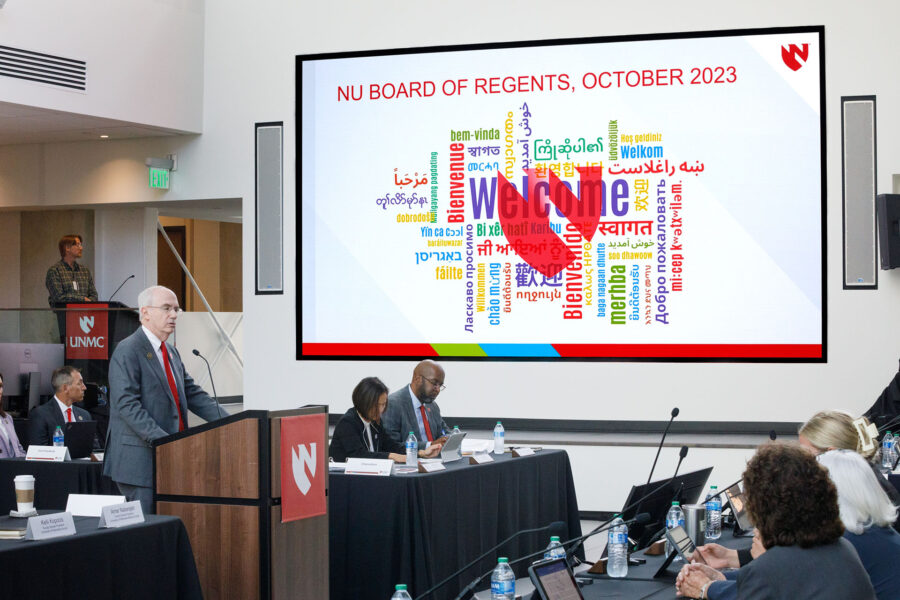Project NExT’s first phase – now known as Project Health: Building the Healthiest Nebraska – will move to a more detailed design phase after a vote Thursday by the University of Nebraska Board of Regents.
The regents’ unanimous decision cleared the way to engage design and construction planning teams for the transformational academic health science initiative. UNMC leaders said that, following a public bid project, they hope to have these planning teams in place by the end of this calendar year.
“The regents’ action today allows us to move forward on the first phase of planning for this highly ambitious project,” UNMC Chancellor Jeffrey P. Gold, MD, said. “UNMC always strives to be the preeminent health education institution in our nation; this initiative ensures that our clinical learning spaces are conducive to modern health education, and it will provide for dramatic expansion of facilities for clinical/translational research, which our current and future students and residents require. Furthermore, this new facility will allow us to provide more health care workforce for Nebraska and beyond, something that is desperately needed in rural and urban communities across the state.”
Project Health: Building the Healthiest Nebraska will position the medical center to improve its capacity to address the health care needs of Nebraska. It will provide needed campus enhancement to UNMC’s research, education, clinical and community service missions at its campus in Omaha. Thousands of UNMC students receive required clinical education annually in Omaha at Nebraska Medicine, UNMC’s primary clinical partner. After graduation, many of these trainees live and work throughout Nebraska.
The enhancements include:
- Building increased academic, research and patient care capacity in new facilities, which – based on the Phase 1 investments and bolstered by future phases – is estimated to generate between $600 million and $1.1 billion in incremental revenue annually by year seven of the project. The Building the Healthiest Nebraska phase itself has the opportunity to support 4,272 additional jobs directly and indirectly and provide $39.4 million in state tax revenue.
- Building the state’s health workforce through class size and residency expansion, which will add many more UNMC educated health professionals. This includes adding many newly minted physicians to the Nebraska workforce annually by 2030.
In addition, Project Health: Building the Healthiest Nebraska will allow UNMC to add approximately 100 new physician residency training positions by 2030. In addition to more health care workers in rural and urban communities, the annual economic impact of these student and resident slots will add hundreds of millions of dollars to the Nebraska economy.
Additional workforce impacts as a result of Phase 1 include:
- Increased emergency department capacity, with up to a 50% increase in ED providers (physicians and nurses).
- Increased allied health professional training and employment opportunities.
- 10-20% growth in support staff because of improved operational efficiencies in new facilities. Increased enrollment across all UNMC educational programs.
- An additional 10-15% expected growth in pharmacy, nursing and allied health training programs.
Phase 2 of Project NExT, “Regional Federal Partnerships,” will potentially provide expansion of facilities for key regional partnerships, while Phase 3, “National Federal Partnerships,” will potentially create a joint civilian-military medical surge facility through additional public-private partnerships. The partnership would expand federal medical surge capability and support the National Disaster Medical System training run by the federal Department of Health and Human Services.
